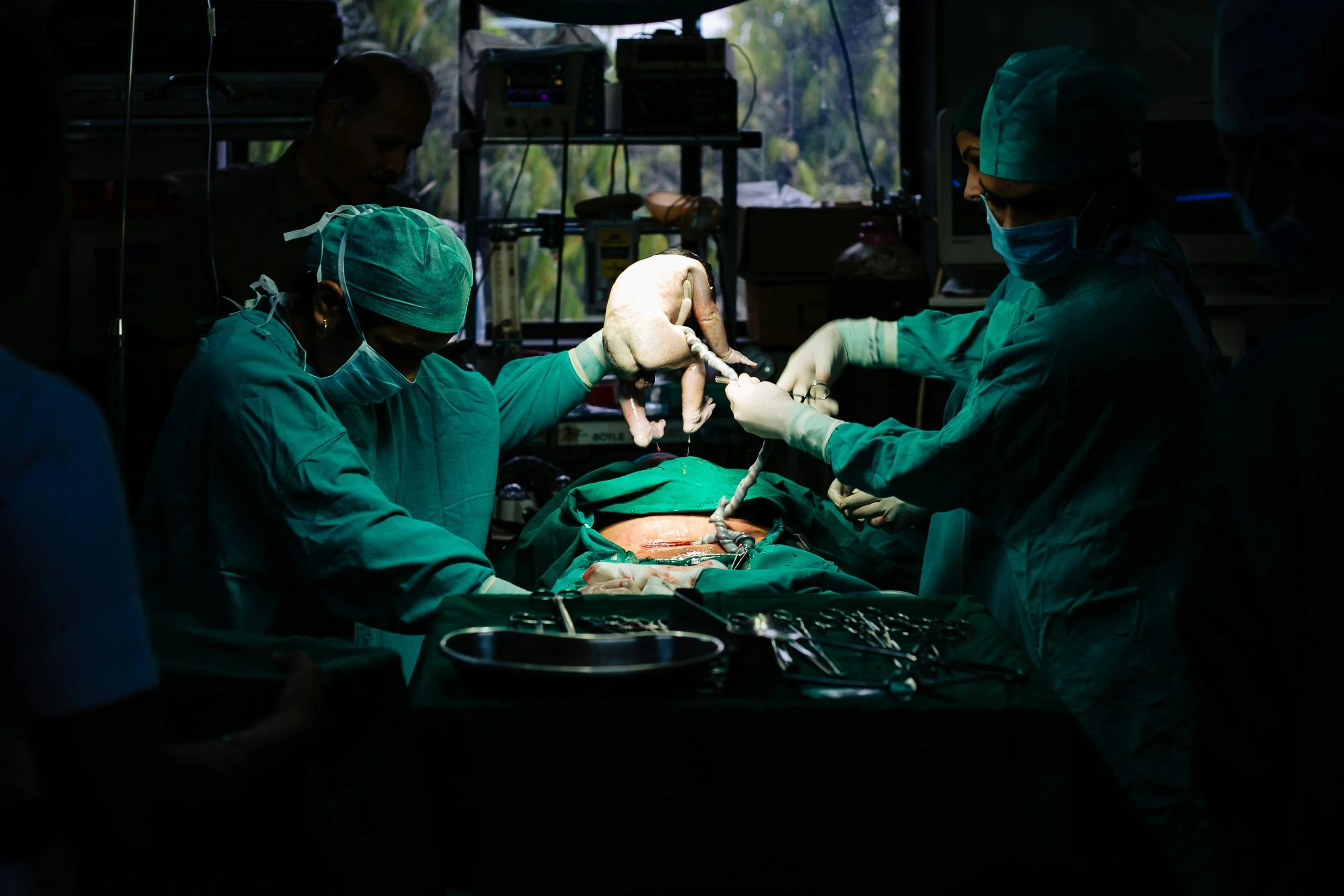Common c-section Hospital routines in sweden
Routines during c-section births vary from hospital to hospital, but in this blog post and YouTube video I will try to cover some of the common hospital routines in Sweden.
There are different types of c-sections, some are scheduled c-sections where you go in to the hospital on a certain day and have the surgery. The reason for this varies, you may have a medical condition that recommends the birth be a c-section, or the baby or the placenta is in a position that isn't conducive with a vaginal birth. Some people have a fear of giving birth vaginally and are therefore get a doctors’ approval for a c-section. In Sweden the general recommendation is to not have a vaginal birth after two c-sections so this is also another reason for scheduling a c-section.
Image from unsplash.com
There are unplanned or emergency c-sections. A unplanned c-section is a most commonly performed when there is a reason to no longer proceed with a vaginal birth. How hastily you are going to surgery depends on the situation. Most of the time you get a spinal block and can be awake during this surgery. Reasons for this may be that the labor isn't progressing, baby isn't handling labor well and needs to come out or other unplanned situations.
An emergency c-section or “urakutkejsarsnitt” is when the c-section needs to happen very quickly because there is a risk for the person giving birth or the baby. In most cases you are put to sleep with anesthesia during this surgery. This type of c-section is most commonly performed to save baby or the birthing parent’s life, or both. For an example an umbilical cord prolapse, ablatio which means that the placenta dettaches from the uterine wall before baby is born, etc.
I will focus on the c-sections when you are awake.
Most commonly the partner or another support person is allowed to be present during the surgery. This person will sit next to the birthing person's head. A c-section is abominable surgery so it will be performed in an operating room with a lot of people present, there will be anesthesiologist, anesthetic nurse, or nurses as well as the obstetrician and the midwife and assistant nurse. Everybody has a specific job and knows what to do.
The surgery begins when the person giving birth is fully pain free from the waist down. There is an incision done on the lower part of the abdomen through cutting through several layers and of different tissue until getting to the uterine muscle that is also cut. You may feel how your body is being moved and shook through this time but you should not feel pain. During the surgery the midwife will stand next to the doctor and will be handed the baby as it is born. In my experience there will be delayed cord clamping for a few minutes, but I'm not sure this is adhered to everywhere. Once the cord is cut the routines vary. At the hospital I used to work we would bring baby directly to the parents for skin to skin if baby is doing okay. If the baby was not okay there was a pediatrician standing ready in the next room. If baby is places skin to skin a lot of the things we normally do post birth can be done skin to skin. And if baby is up for it they may even breastfeed while surgery is concluded.
In some places the baby is first brought to be checked by the pediatrician, the umbilical cord is fully cut, vitamin K is given if the parents opted for it and then baby gets to come for skin to skin if possible with the person who has given birth.
What happens next varies. In some places baby and parents are not separated and baby can go with the person who has given birth to the post surgery ward. In some hospitals this is however not an option and then baby has to go with the other parent or the support person to postnatal care and wait there.
From a baby and parent point of view the best would be zero separation, just as done for vaginal births. Unfortunately this is not an option everywhere, there reasons for this may vary. It can be due to not having enough staff or possibly lack of knowledge of the benefits by the staff. I encourage you to write in your birth preferences in case of a c-section you want skin to skin with zero separation. Even if the hospital you go to doesn't offer this by routine they may still do it if you see this stated in your birth preferences.

